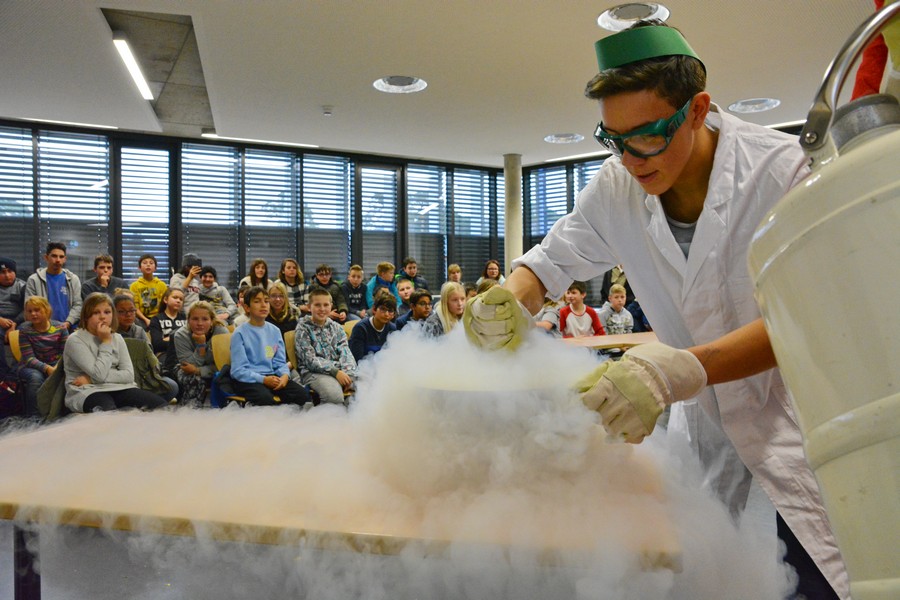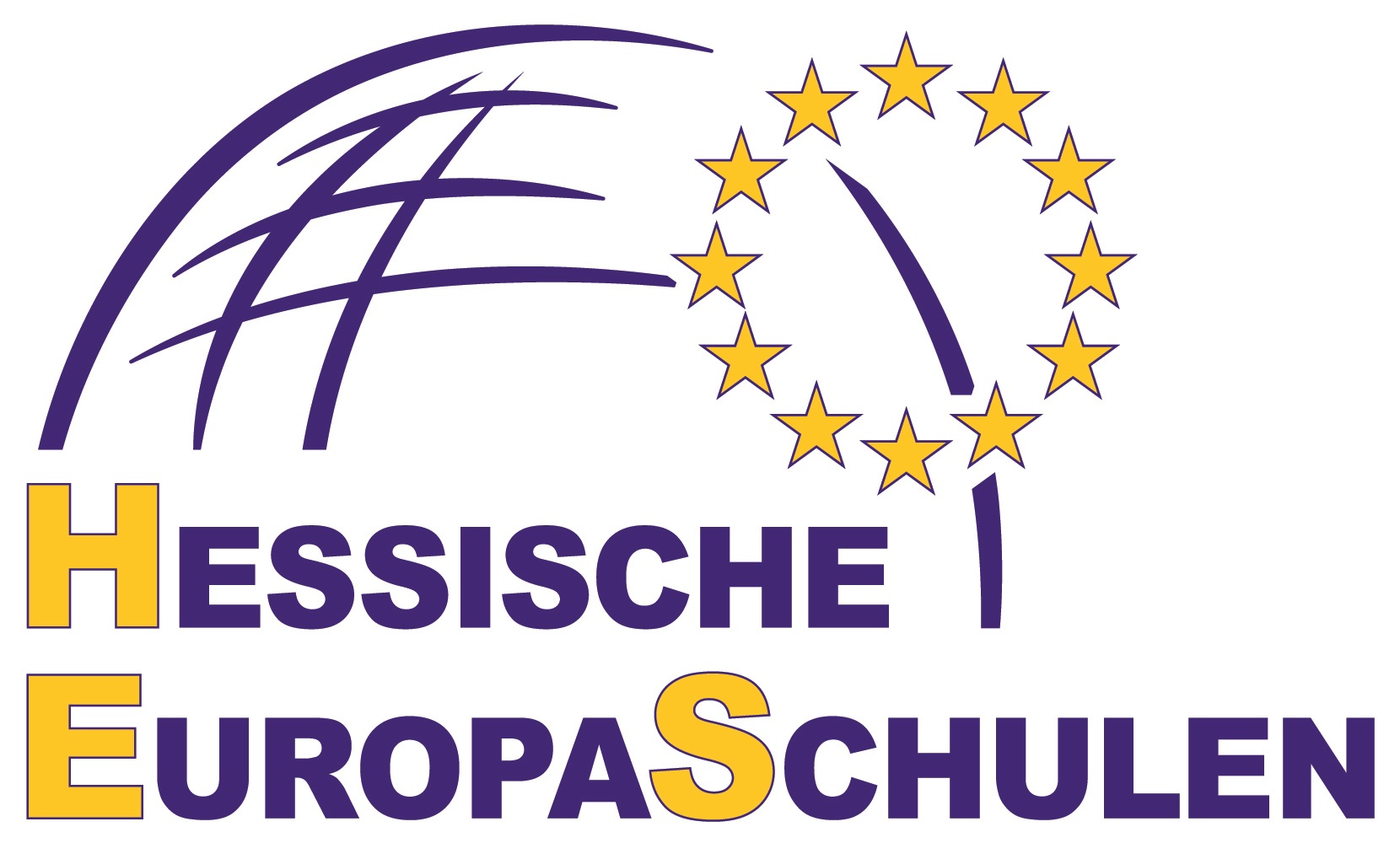 In diesem Jahr waren die Klassen 6a und 6b des H/R- Zweigs zur Chemie- Show in den internationalen Schulzweig (Secondary) eingeladen worden. Diesmal traten die grünen „Grinches“ gegen die Weihnachtselfen an, um eindrucksvoll vorzuführen, warum „Feuer und Eis“ gegensätzliche Kräfte sind! Zum Glück konnte am Ende der Weihnachtsmann für Frieden sorgen und alle mit einem Geschenk erfreuen, das sowohl bei heißen, als auch frostigen Temperaturen großen Anklang findet!
In diesem Jahr waren die Klassen 6a und 6b des H/R- Zweigs zur Chemie- Show in den internationalen Schulzweig (Secondary) eingeladen worden. Diesmal traten die grünen „Grinches“ gegen die Weihnachtselfen an, um eindrucksvoll vorzuführen, warum „Feuer und Eis“ gegensätzliche Kräfte sind! Zum Glück konnte am Ende der Weihnachtsmann für Frieden sorgen und alle mit einem Geschenk erfreuen, das sowohl bei heißen, als auch frostigen Temperaturen großen Anklang findet!
Die Rückmeldung unseres jungen Publikums ließ nicht lange auf sich warten: Die „echte Chemie, die stinkt und knallt“ wurde ebenso begeistert aufgenommen wie die heiße Phase der Show, in der die Elftklässler „wie Feuerwerfer“ agierten. Die „coolen“ Experimente stießen später auf genauso starken Zuspruch, wie beim eigenen Beitrag zum abrupten Ende der „gläsernen“ Rose und natürlich beim Genuss der Weihnachtsgabe.
Nun aus dem Blickwinkel der Elftklässler des internationalen Schulzweigs:
This year´s traditional chemistry show- presented by the y 11 IB chemistry students- was planned and performed for the classes 6a and 6b of the German branch. So one of the skills required was learning one´s part in plain German, quite a challenge for some of the international students !
To my opinion the group did a wonderful job to collect some more CAS points for their IB diploma. But see for yourselves in a more detailed article written by Bella Armstrong, who was also responsible for the complete choreography of the show:
"Behind the scenes of the show
When Mrs. Schmoeckel first suggested the chemistry show, we (the chemistry class) were delighted. After all, why would we ever say no to a chance to show off our skill in handling corrosives and explosives? Besides, it would be an opportunity to do lots of new experiments and consolidate our understanding of the theory behind them.
Of course, we couldn't entirely abandon our regular classes, so the experiments all had something to do with the syllabus or were related to a question discussed in class. For example, when we blew up balloons full of hydrogen, we related it to molar ratios and worked out the mix of hydrogen and oxygen that would give the biggest explosion. The combustion chamber helped to explain how an increase in surface area relates to the rate of reaction. The coloured fire experiment demonstrated emission spectra, which in turn aided our understanding of electron shell sub-levels.
- Zurück
- Weiter >>

